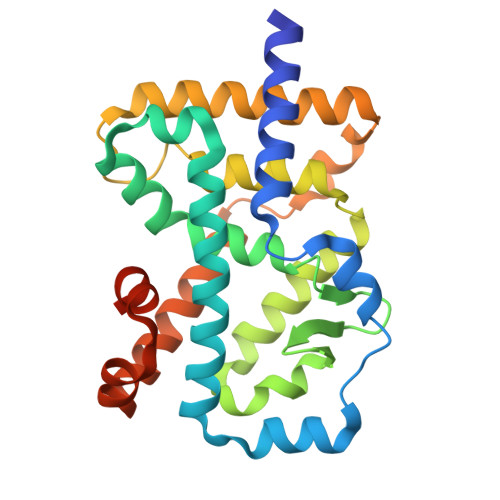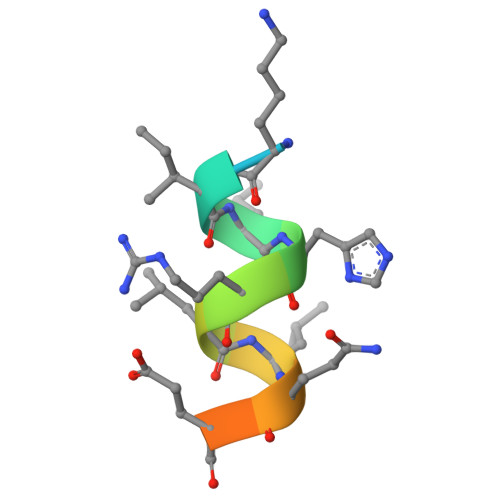A Concise and Modular Approach to Generate Novel ROR gamma Agonists.
Fukuda, S., Ikenogami, T., Otake, K., Miwa, S., Maeda, K., Yamashita, T., Inami, T., Yokota, M., Lu, Y., Suma, A., Hirono, Y., Ogawa, N., Inoue, T., Harada, K., Yamaguchi, K., Akai, S., Nomura, A., Adachi, T., Terawaki, T., Suzukawa, A., Kitamoto, M., Tanimoto, M., Noguchi, T., Hata, T., Kawahara, I., Iwamoto, K., Kondo, K., Kitagawa, Y., Naka, Y., Crowe, P., Tao, H., Fenn, M., Thacher, S., Oba, M., Shiozaki, M.(2025) J Med Chem 68: 15849-15871
- PubMed: 40677142
- DOI: https://doi.org/10.1021/acs.jmedchem.5c00872
- Primary Citation of Related Structures:
9VNX - PubMed Abstract:
A variety of RORγ inhibitors have been identified, including clinical compounds such as VTP-43742 and JTE-151. In contrast, RORγ agonists have been less explored and LYC-55716 is, to the best of our knowledge, the sole example reached a human clinical investigation. To generate a novel RORγ agonist, functionality switching from preceding RORγ inhibitors has been considered as a rational strategy. Such reported earlier attempts have been hampered by a loss of physicochemical properties to elevated lipophilicity. Starting from RORγ inhibitors, corresponding agonists were generated virtually to assess their druglike characters. Based on their ligand efficiency and lipophilicity, a cyclic amine carboxylate core was regarded as the best for maintaining favorable physicochemical properties. This scaffold was subjected to final optimization by attaching function-oriented modules retaining druglike properties. After multiparameter optimization, novel selective RORγ agonists were discovered, and their in vivo effects were confirmed in a syngeneic mouse model after oral administration.
- Central Pharmaceutical Research Institute, Takatsuki Research Center, Japan Tobacco Inc., 1-1, Murasaki-cho, Takatsuki, Osaka 569-1125, Japan.
Organizational Affiliation:




















